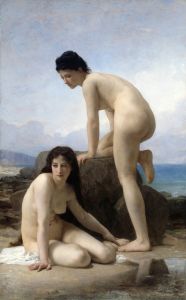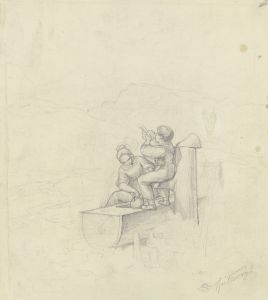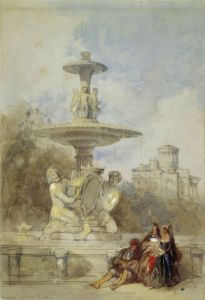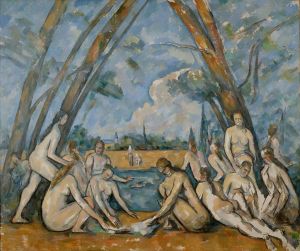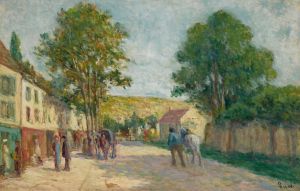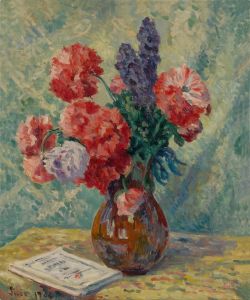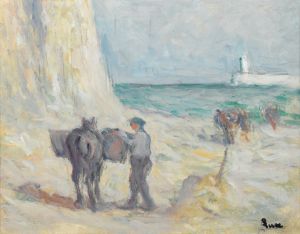
Les baigneurs au jet d’eau
A hand-painted replica of Maximilien Luce’s masterpiece Les baigneurs au jet d’eau, meticulously crafted by professional artists to capture the true essence of the original. Each piece is created with museum-quality canvas and rare mineral pigments, carefully painted by experienced artists with delicate brushstrokes and rich, layered colors to perfectly recreate the texture of the original artwork. Unlike machine-printed reproductions, this hand-painted version brings the painting to life, infused with the artist’s emotions and skill in every stroke. Whether for personal collection or home decoration, it instantly elevates the artistic atmosphere of any space.
Maximilien Luce was a prominent French Neo-Impressionist painter known for his contributions to the Pointillist movement. Born on March 13, 1858, in Paris, Luce initially trained as an engraver before transitioning to painting. He became associated with the Neo-Impressionist movement, which was characterized by the use of small, distinct dots of color applied in patterns to form an image. This technique, known as Pointillism, was pioneered by Georges Seurat and Paul Signac, with whom Luce shared a close association.
"Les baigneurs au jet d’eau" (translated as "Bathers at the Water Jet") is one of Luce's works that exemplifies his mastery of the Pointillist technique. While specific details about the painting's creation, such as the exact year it was painted, are not widely documented, it reflects the typical themes and style of Luce's oeuvre during his mature period. Luce often depicted scenes of everyday life, capturing the vibrancy and dynamism of urban and rural settings with a focus on light and color.
The painting likely portrays a scene of leisure, a common subject in Impressionist and Neo-Impressionist art, where bathers are depicted enjoying a day by the water. The use of a water jet as a central element in the composition suggests a public or communal space, possibly a park or a riverside area, where people gather to relax and enjoy the outdoors. This aligns with Luce's interest in depicting modern life and the social changes of his time, as public spaces became more accessible to a broader segment of society.
Luce's technique in "Les baigneurs au jet d’eau" would have involved the meticulous application of small, individual strokes or dots of pure color. This method allows for the optical mixing of colors when viewed from a distance, creating a luminous effect that captures the play of light on water and skin. The choice of colors and the way they interact would have been carefully considered to evoke a sense of harmony and vibrancy, characteristic of Luce's work.
Throughout his career, Luce was deeply influenced by his political beliefs, which leaned towards anarchism. This perspective often informed his choice of subjects, focusing on the lives of ordinary people and the beauty of everyday moments. While "Les baigneurs au jet d’eau" does not overtly convey a political message, it fits within Luce's broader artistic vision of celebrating the simple pleasures of life and the natural world.
Maximilien Luce's contributions to the Neo-Impressionist movement have been recognized for their technical skill and emotional depth. His works are held in high esteem and can be found in major art collections and museums worldwide. "Les baigneurs au jet d’eau" remains a testament to his ability to capture the essence of a moment through the innovative use of color and light, reflecting both the artistic and social currents of his time.





